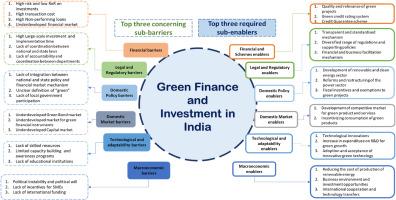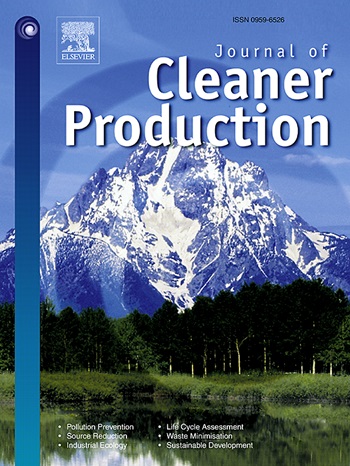Green Finance and Investment in India: Unveiling Enablers and Barriers for a Sustainable Future
IF 9.7
1区 环境科学与生态学
Q1 ENGINEERING, ENVIRONMENTAL
引用次数: 0
Abstract
The green transition of the financial system requires the collaborative and active participation of public and private organisations. Various factors influence the growth of a green finance (GF) and green investments (GI) ecosystem. These factors vary for both developing and developed countries. The present study aims to evaluate barriers and enablers to the growth of GF and GI in India. Enablers and barriers have been identified through a comprehensive literature review and the modified Delphi technique. They are prioritised and ranked by applying Multicriteria decision-making (MCDM) approaches. The analytical hierarchy process (AHP) and the technique for order preference, which is similar to the ideal solution (TOPSIS), are applied to prioritise the 43 sub-barriers and 32 enablers, categorised into six parameters. The robustness of the results is checked through sensitivity analysis. The findings show that financial, legal and regulatory barriers are the most deterring barriers. Technological innovation and the development of clean energy sectors are prominent enablers. Expanding the knowledge base, diversifying financial instruments and promoting transparency in disclosures and reporting can mitigate investors' risk in GI. The findings contribute to the literature and give insight into factors that can significantly impact GF and GI in India. The recommendations contribute to the strategic and inclusive formulation of the policy framework. The present research has implications for financial and capital markets and regulatory bodies, as well as industry and society at large; thus, further studies can draw insights into green growth in emerging economies. The analysis can be further extended by conducting a thorough quantitative analysis of the pivotal actors.

求助全文
约1分钟内获得全文
求助全文
来源期刊

Journal of Cleaner Production
环境科学-工程:环境
CiteScore
20.40
自引率
9.00%
发文量
4720
审稿时长
111 days
期刊介绍:
The Journal of Cleaner Production is an international, transdisciplinary journal that addresses and discusses theoretical and practical Cleaner Production, Environmental, and Sustainability issues. It aims to help societies become more sustainable by focusing on the concept of 'Cleaner Production', which aims at preventing waste production and increasing efficiencies in energy, water, resources, and human capital use. The journal serves as a platform for corporations, governments, education institutions, regions, and societies to engage in discussions and research related to Cleaner Production, environmental, and sustainability practices.
 求助内容:
求助内容: 应助结果提醒方式:
应助结果提醒方式:


